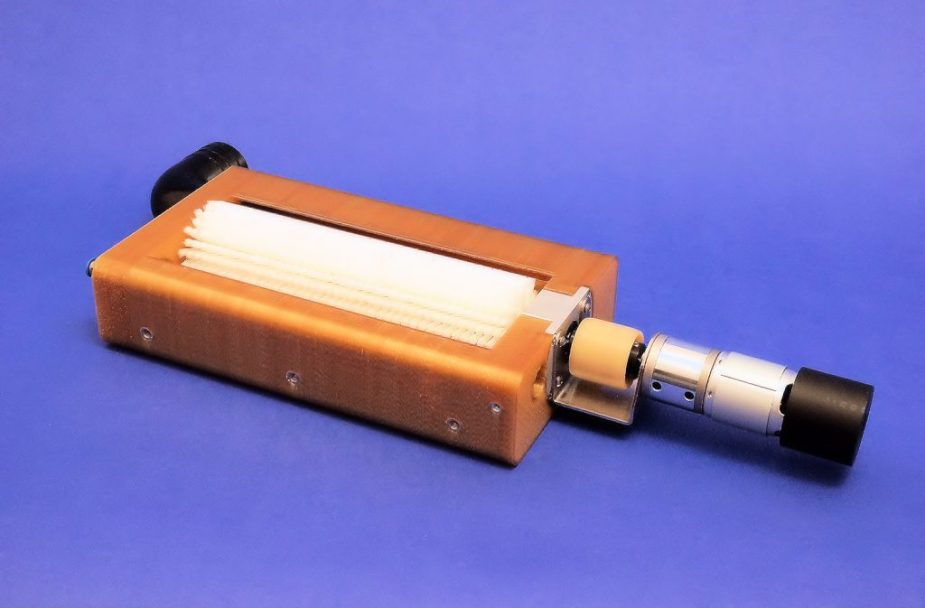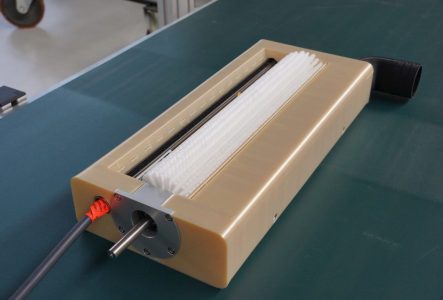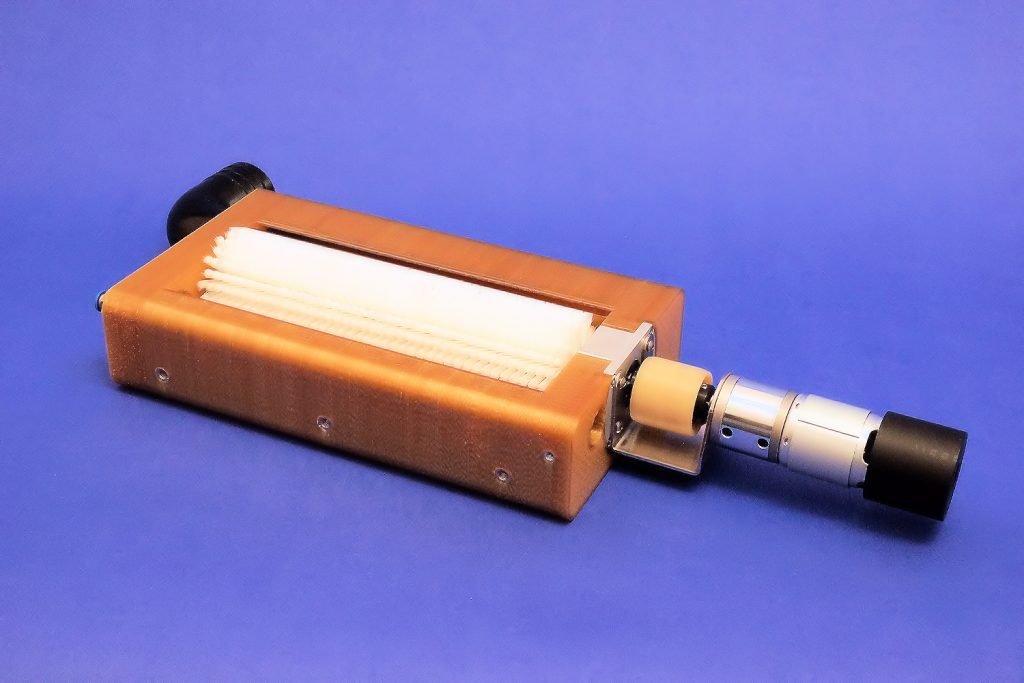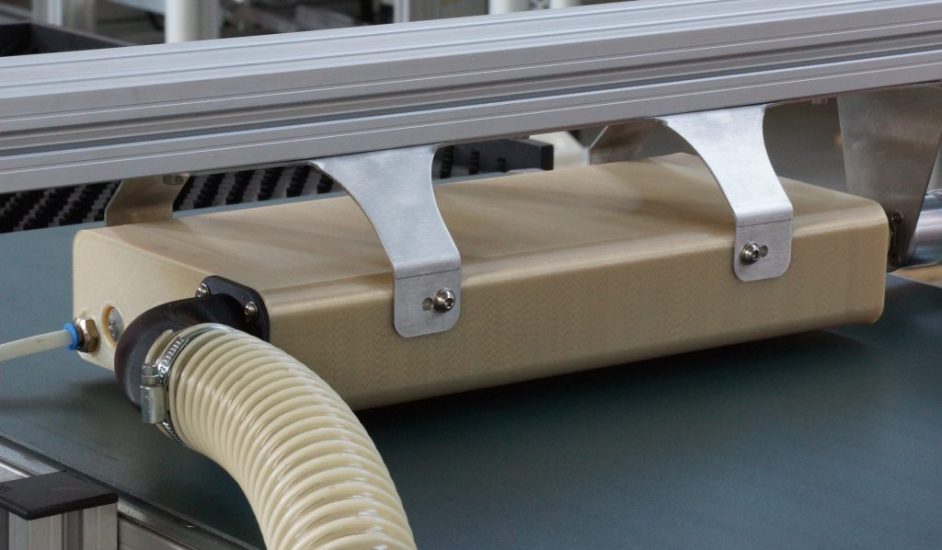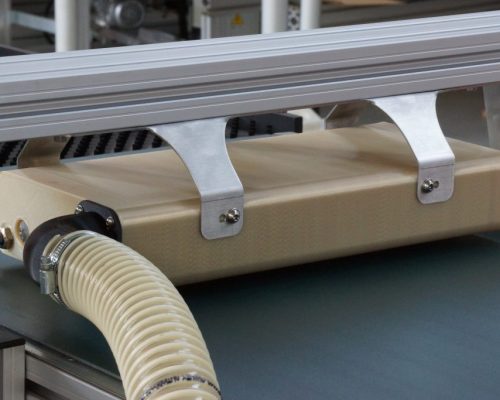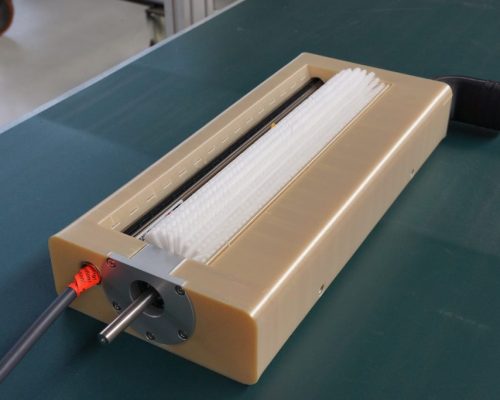DEP070
Generalities
The DEP070 is a compact brushing machine. With its small cross-sectional area, it can easily fit into any production line. The following are integrated into the body: the D = 70 mm brush, ionizing bar, air nozzles, and fume hood. The brush is mounted on a stainless steel shaft and can be driven by a 24 V DC motor or an AC motor.
DEP070 can have the body and brush for food use. The brush can be easily replaced using the extraction flange. Working length from 100 to 500 mm.
| SPAZZOLA | a rullo L=100 – 500 mm |
|---|---|
| MOTORE ELETTRICO | 24 V DC oppure 220-380 V CA |
| VELOCITÀ DI TRATTAMENTO | max 200 m / min |
| DIMENSIONI MM | 68 X 180 X L |
Videos and images
GALLERY
Do you want to request an offer?
Are you interested in receiving more information and being contacted by one of our specialized operators?
Request your offer now

Do you want to request an offer?
Are you interested in receiving more information and being contacted by one of our specialized operators?
Request your offer now
Frequently asked questions
Toggle title
These are machines that use technical brushes in their production process.
What are the main types of brush machines?
Dedusters, orienters, elevators, conveyors.
What are the advantages of this type of machine?
Industrial brushes are characterized by great adaptability to surfaces, great flexibility of use, and virtually unlimited variety of shapes and hardness. Therefore, the use of brushes in machines succeeds in being very efficient in many industrial processes.
What are the advantages of this type of machine?
Industrial brushes are characterized by great adaptability to surfaces, great flexibility of use, and virtually unlimited variety of shapes and hardness. Therefore, the use of brushes in machines succeeds in being very efficient in many industrial processes.
In particular, dust collectors with brushes are more efficient than traditional non-contact dust collectors, while in the case of orienters, brushes replace other techniques (compressed air, vibration, etc.) managing to treat parts with low energy consumption, gently and quietly. The small footprint is another important advantage.
Can the brushes contained in the machines cause product contamination through filament loss?
It can happen only if the brush is damaged due to an unforeseeable cause, such as a defective product that enters the machine and gets stuck in the brush destroying it, as on the other hand can happen with any other type of part in the machine. It should be mentioned that the same type of brush is currently used in pharmaceuticals and food without any problems.
Are your machines economically competitive?
Speaking of dust collectors, they are definitely cheaper than the main competitors.
As far as the orienters are concerned, they are aligned, but when looking at energy and space savings they are also more advantageous.
How is the choice between different models of dust collectors made?
The customer sends us a few panels (sheet, film, etc.) that are treated in the lab with various dust collectors so that we can choose the one that gives the best results. The processed samples are then reviewed by the client for approval.
Is it possible to test a dust collector before purchase?
We generally have field test dust collectors available, which can be sent to the customer for limited periods of time.
Is your assistance needed to install a dust collector on a production line?
No, the installation is done directly by the customer given its extreme simplicity. One must first evaluate the available spaces on the line, which sometimes contribute to the choice of the dust collector itself.
How often should the brushes be replaced?
There is no one answer, as this time depends on many factors, such as product speed, materials, pressure, shifts, etc. As a broad indication, it can be said that a set of brushes can last between one and two years, sometimes longer.

